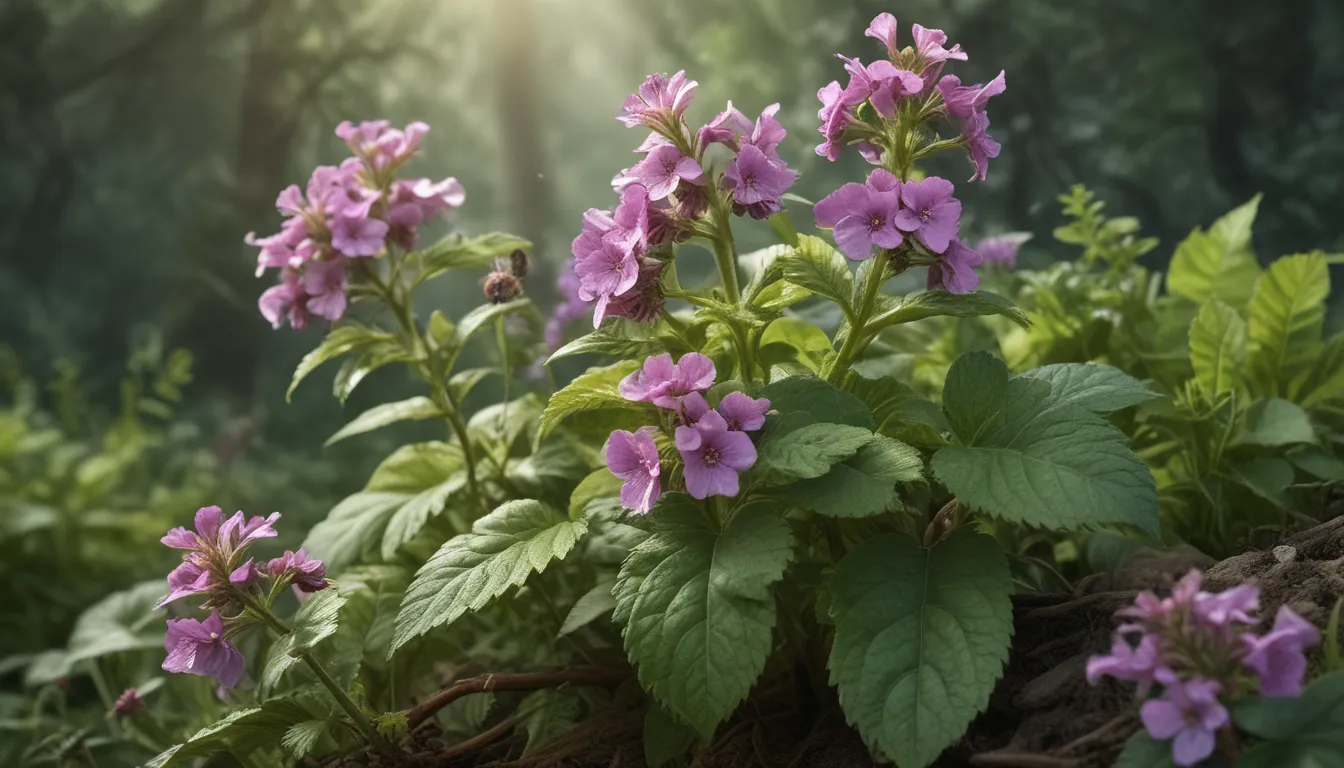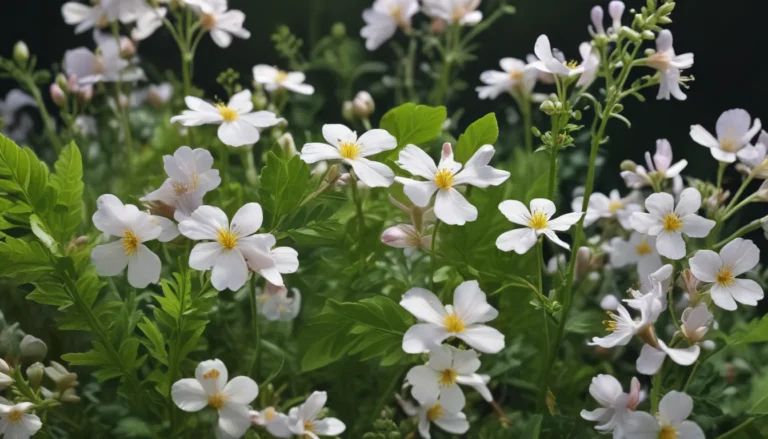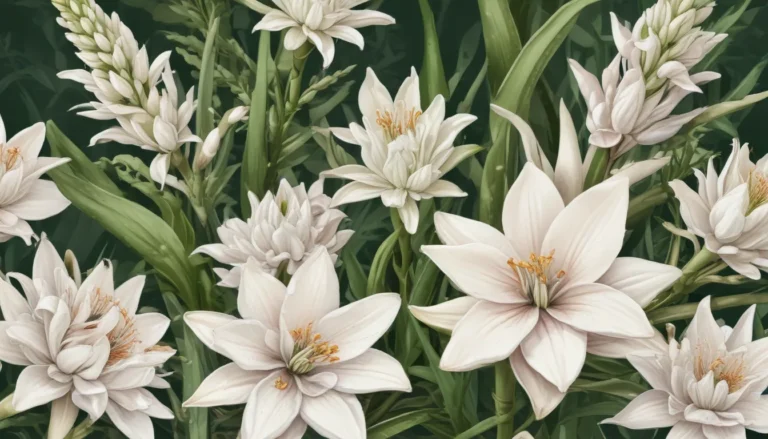The pictures we use in our articles might not show exactly what the words say. We choose these pictures to make you interested in reading more. The pictures work together with the words but don’t take their place. The words still tell you the important facts.
Are you a plant enthusiast looking to add a touch of elegance and functionality to your garden? Look no further than the captivating Spotted Deadnettle, also known by its scientific name Lamium maculatum. This herbaceous perennial from the mint family, Lamiaceae, boasts vibrant colors, unique foliage, and a wide range of uses that make it a valuable addition to any garden.
In this article, we will delve into 20 enigmatic facts about Spotted Deadnettle that will leave you wanting to learn more about this enchanting plant. From its historical significance to its medicinal properties, we will explore the various aspects that make Spotted Deadnettle a must-have for plant enthusiasts. Let's unravel the secrets of this remarkable plant and discover why it's a favorite among gardeners and botanists alike.
The Versatility of Spotted Deadnettle
- Thriving in Shade: Unlike many other plants that require direct sunlight, Spotted Deadnettle thrives in shaded areas, making it an excellent choice for gardens with limited sunlight.
- Low Maintenance: Known for its adaptability to various soil conditions and drought tolerance, Spotted Deadnettle is a relatively low-maintenance plant that is perfect for both experienced gardeners and beginners.
- Beautiful Blooms: With small, tubular-shaped flowers in pink, purple, and white hues, Spotted Deadnettle not only adds visual appeal to your garden but also attracts bees and butterflies, contributing to a thriving ecosystem.
- Edible and Medicinal: While primarily grown for ornamental purposes, Spotted Deadnettle has culinary and medicinal uses. Its young leaves can be added to salads, and it has been used in traditional medicine for its anti-inflammatory properties.
A Closer Look at Spotted Deadnettle
Unique Appearance
The distinct markings on the leaves of Spotted Deadnettle give it its name. Ranging in color from silver to white or pink, these spots add an elegant touch to the plant. The heart-shaped leaves with a textured surface further enhance its visual appeal.
Ornamental Qualities
Spotted Deadnettle's beautiful foliage remains attractive throughout the growing season, even without the presence of flowers. The velvety texture of the leaves adds to its charm, making it a delightful addition to any garden.
Planting and Care Tips
- Companion Planting: Spotted Deadnettle works well as a companion plant, providing groundcover and suppressing weeds while creating a visually appealing backdrop in the garden.
- Drought Tolerance: Once established, Spotted Deadnettle has good tolerance for drought conditions, making it a reliable choice for gardens in arid regions or for those looking to conserve water.
- Propagation: Propagating Spotted Deadnettle is easy through division in spring or autumn. Simply separate established plants into smaller sections with a root system and replant them in desired areas.
The Magic of Spotted Deadnettle
Symbolic Meaning
In folklore and symbolism, Spotted Deadnettle represents protection and fertility. Believed to ward off negative energies and bring good luck, this plant adds a touch of magic to your garden.
Attracts Beneficial Insects
Spotted Deadnettle is a magnet for beneficial insects like bees and butterflies. By cultivating this plant, you contribute to the conservation of these important insect species while creating a thriving garden ecosystem.
Natural Pest Control
The ability of Spotted Deadnettle to deter pests like aphids through the emission of chemicals makes it a natural form of pest control. By including this plant in your garden, you can minimize the need for chemical pesticides.
Unveiling the Mysteries of Spotted Deadnettle
Whether you're an avid gardener, a herbalist, or simply a nature lover, the Spotted Deadnettle offers something for everyone. Its striking appearance, adaptability to different conditions, and role in supporting biodiversity make it a plant worth exploring. Add this enigmatic plant to your collection and marvel at the wonders of the plant kingdom as you discover its unique qualities.
FAQs About Spotted Deadnettle
- What is Spotted Deadnettle?
Spotted Deadnettle (Lamium maculatum) is a perennial flowering plant known for its vibrant foliage and colorful flowers. - Where can Spotted Deadnettle be found?
Native to Europe and Asia, Spotted Deadnettle can now be found in various regions worldwide, including North America, where it is cultivated as an ornamental plant. - Can Spotted Deadnettle be grown indoors?
Yes, Spotted Deadnettle can thrive as a houseplant, requiring well-draining soil and bright, indirect light. - Does Spotted Deadnettle have medicinal properties?
Spotted Deadnettle has been used in traditional medicine for its anti-inflammatory and astringent properties, offering benefits for various health conditions. - Are there special care requirements for Spotted Deadnettle?
Spotted Deadnettle is a low-maintenance plant that prefers moist, well-drained soil and partial shade, making it an easy addition to any garden.
As you explore the captivating world of Spotted Deadnettle, you'll uncover its intriguing qualities and gain a deeper appreciation for the beauty and functionality it brings to your garden. Embrace the magic of this versatile plant and join the ranks of plant enthusiasts who have been enchanted by its allure. Add a touch of elegance and charm to your outdoor space with the enigmatic Spotted Deadnettle.






